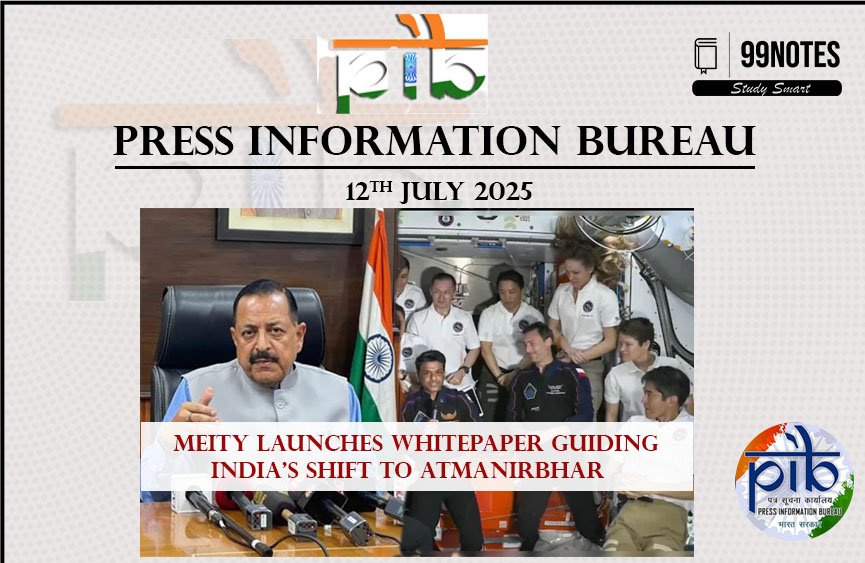12 July 2025: PIB Summary For UPSC
1. MeitY launches whitepaper guiding India’s shift to Atmanirbhar & quantum‑safe cybersecurity
(Source – PIB (Press Information Bureau), July, 12, 2025)
|
Topic: GS Paper 3 — Science & Technology: Cybersecurity, Emerging Technologies |
|
Context |
|
Content
Background
-
India has rapidly evolved into a digital‑first economy, leveraging digital payments and public services. However, this digital transformation carries the critical responsibility of safeguarding data, financial transactions, and strategic national infrastructure.
-
Quantum computing poses a threat to legacy cryptography systems (like RSA and ECC), expected to be obsolete in the coming years.
Overview of the Whitepaper
-
Titled “Transitioning to Quantum Cyber Readiness”, the paper is jointly released by MeitY, CERT‑In, and cybersecurity firm SISA.
-
It provides a strategic framework for organizations—public and private across regulated sectors like BFSI, healthcare, and government—to prepare for quantum threats.
Key Highlights and Recommendations
-
Encryption Risk Horizon: Traditional encryption algorithms (RSA, ECC) are forecast to be broken within a few years by quantum advancements.
-
Strategic Roadmap: Guidelines for migrating to quantum‑resistant algorithms, and integrating them within existing IT infrastructure while ensuring compliance and operational continuity.
-
Sectoral Guidance: Actionable advice tailored for critical sectors—financial institutions, healthcare, defence, public utilities.
-
Public‑Private Collaboration: Stress on coordinated efforts between government (CERT‑In) and private sector innovators (e.g. SISA) for holistic preparedness.
-
Capacity Building: Emphasis on building organisational agility and resilience in ICT architectures to adapt to AI and quantum transformations.
Analysis
-
Strategic Imperative: Signals proactive foresight in India’s cybersecurity policy, moving beyond reactionary approaches.
-
Global Benchmarking: Puts India in league with countries advancing post‑quantum cryptography standards (e.g. NIST in USA, EU QSC working groups).
-
Policy Implications: Potential upcoming updates to IT rules, standards (e.g. encryption guidelines), with regulatory mandates for critical infrastructure.
-
Operational Challenges: Requires investment in cryptographic upgrade cycles, skilled human resources, and cross‑sector coherence.
Conclusion
-
Adoption Path: Organisations must conduct quantum‑threat assessments, update crypto protocols, and initiate pilot migrations.
-
Policy Support: Government may follow up with advisory circulars, certifications, and compliance deadlines.
-
Ecosystem Building: A stable public‑private innovation ecosystem is essential—academia, startups, research institutions, SOCs (Security Operation Centres).
-
Public Awareness: Sensitisation of non‑tech stakeholders (e.g. healthcare administrators, financial regulators) about quantum risks.
|
Practice Question: “The rising threat of quantum computing necessitates urgent reform of existing cryptographic infrastructure in India. Examine the significance of MeitY’s newly launched whitepaper on quantum cyber readiness. What challenges and opportunities does this initiative pose for India’s digital ecosystem?” |
Check this out 11 July 2025: PIB Summary For UPSC



